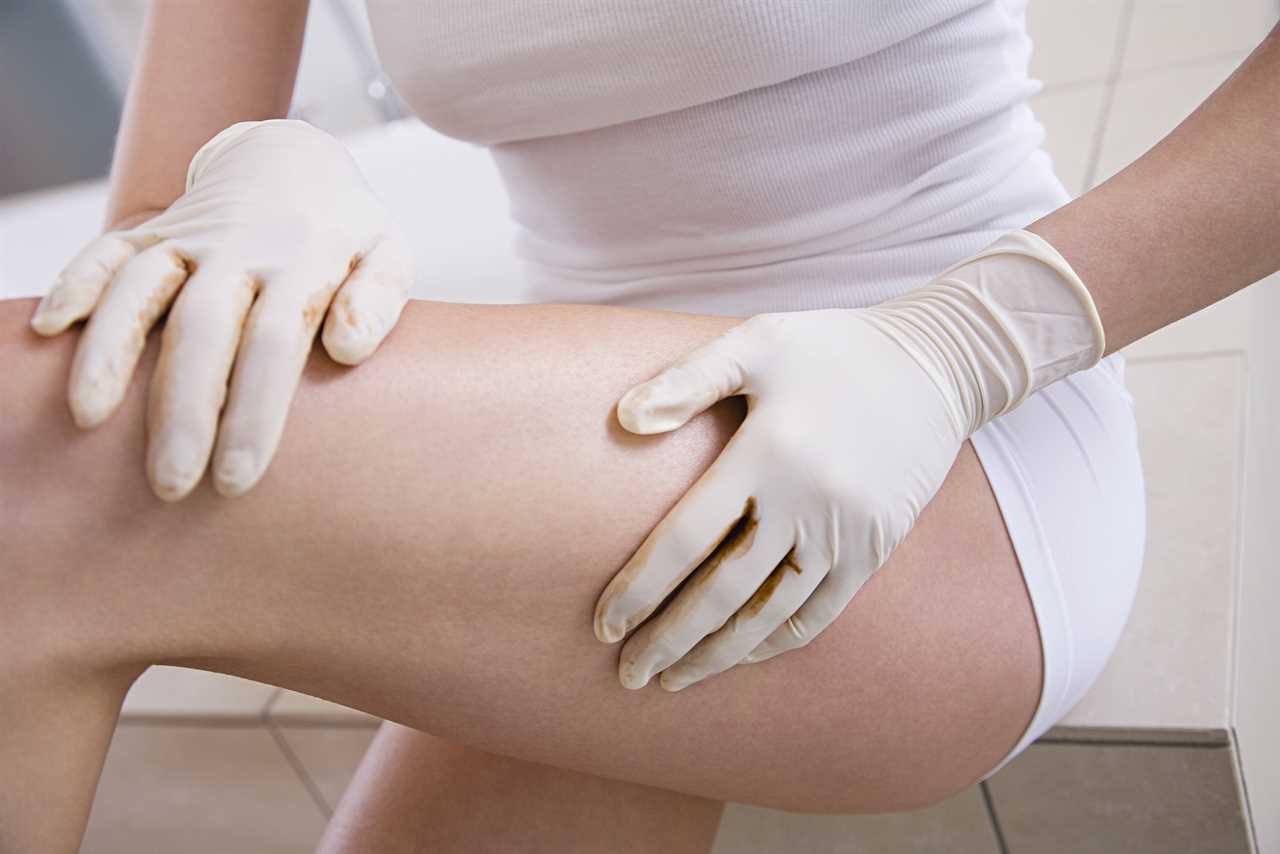PEOPLE who wear fake tan have been warned that they could be living with a deadly illness.
Experts have claimed that those who artificially darken their skin could have undetected skin cancer.

People who wear fake tan have been told to abstain from using it six weeks before dermatology appointments
This is because dermatologists are sometimes unable to spot any new changes or marks that have developed on a person that uses the bottled glows.
Medics at the University of Galway explained that fake tan can collect in the crevices of moles or spots – which can sometimes make it look like they have changed – even if they haven’t.
Cases of skin cancer are continuing to rise in the UK – with more than 2,500 skin cancer mortalities a year and 140,000 annual incidences of the disease.
Around 15,000 of these tumours are melanoma, the most dangerous form.
Through their analysis, the team found that one in 10 women who attended appointments for new lesions were wearing tan that ‘limited accurate pigment lesion assessment’.
This meant that the appointments had to be rescheduled – further pushing back any diagnosis.
Because of this, medics have now included a line on their appointment letters which urges patients to avoid artificial tanning six weeks prior to appointments.
They added that they hoped this would prevent any further delays to already long waiting lists.
While they added that false tan is a healthy alternative to tanning practices, it could interfere with the detection of cancer.
Brits have recently been urged to take more selfies in order to spot skin cancer.
Around one in three people never look for tell-tale signals such as a new mole or a change in colour or shape of an existing one.
Research from skin tracking app Miiskin found that just two in five Brits would check for skin cancer if an NHS screening was offered to them.
Figures shows that a quarter of Brits are concerned that tanning or sunburn in the past has damaged their skin, and many now regularly take skin ‘selfies’ to help spot signs of the disease developing.
One in five have taken photos of their moles to track for changes and one in 10 now do so at least once a month.
An estimated 300 million potentially life-saving selfies are taken every year by people in Britain to track changes to moles.
But experts found this is more popular for younger age groups, with 89 per cent of those aged 55 and over never having done it.
Dr Anton Alexandroff, consultant dermatologist and British Skin Foundation spokesperson, said: “Skin cancer remains prevalent in the UK.
“It usually isn’t painful, so being aware of the visible warning signs and checking your skin is crucial, as most skin cancers can be cured if detected early.
“Look out for changes to the appearance of moles, such as the size, shape and colour, as well as new moles and marks – taking photos can help you notice changes over time.
“You should examine all of your body – including your nails, where melanoma can show as a dark line under the nail.”
He added that if you notice something concerning, then it’s key to get checked by your GP or a skin specialist.






